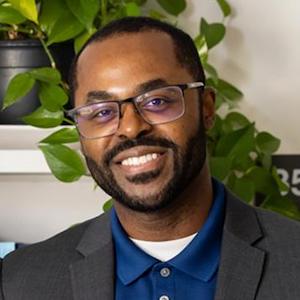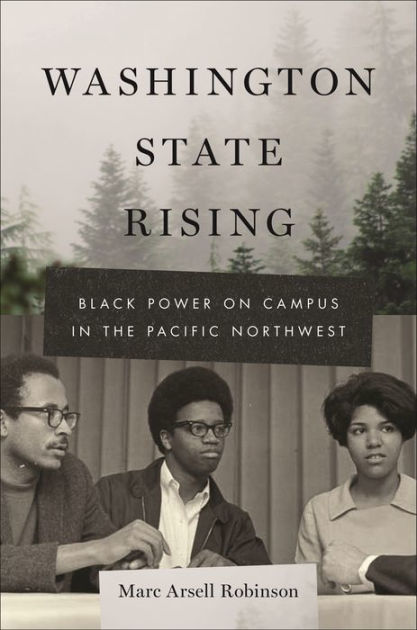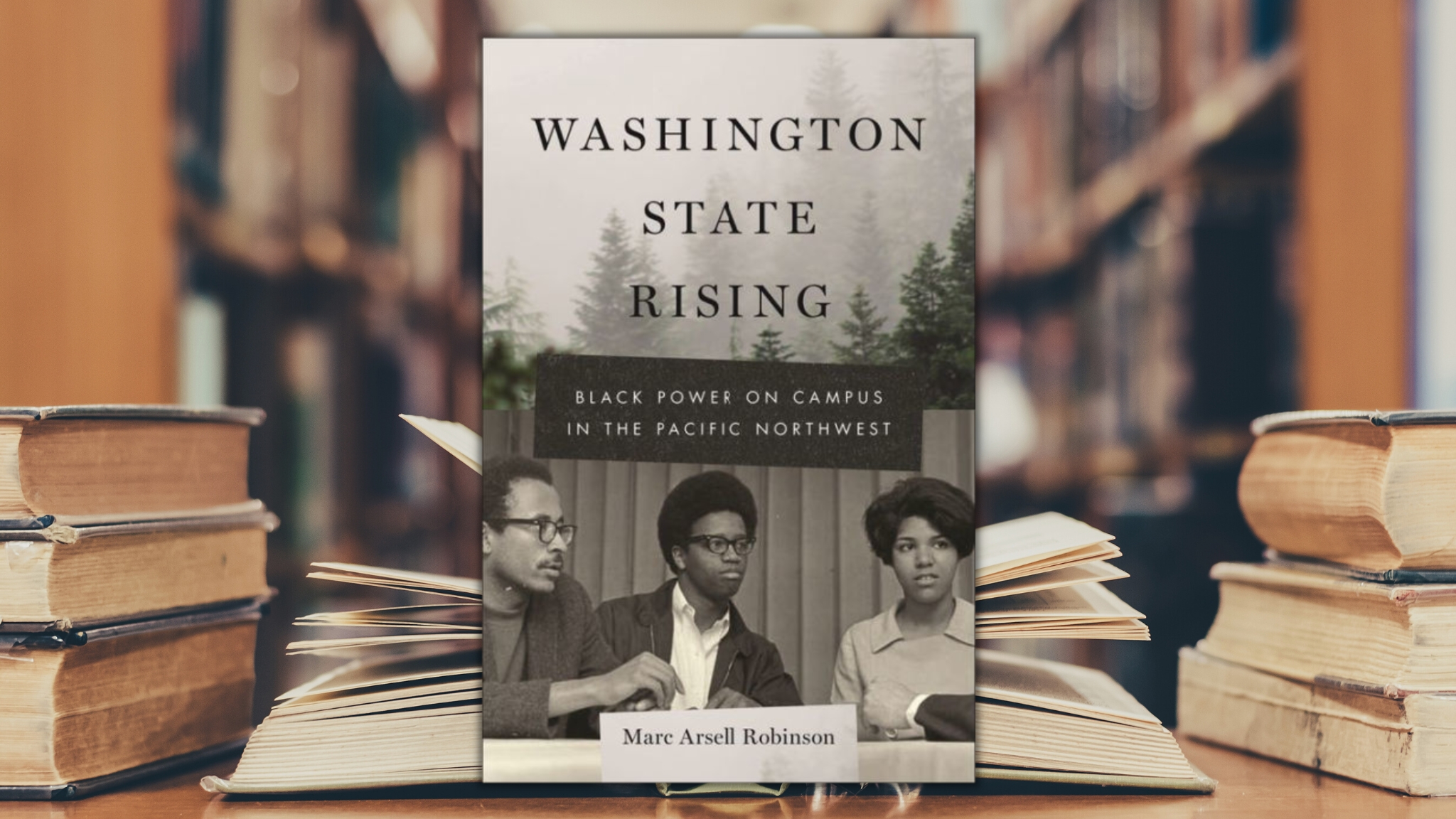Washington State Rising by Marc Arsell Robinson
In 1967, Stokely Carmichael visited Seattle and delivered a speech that galvanized his largely Black audience. The civil rights activist and future Prime Minister of the Black Panther Party spoke urgently:
“. . . it is simply a question of he who has power. And we don’t have that. We got everything else but that and the white man ain’t got nothing but that. You ever dug it? We got love, we got nonviolence, we got morality . . . but we ain’t got power.”
A new history of Black activism in colleges and universities in Washington State points to Carmichael’s speech as the inspiration for students to organize and negotiate for reform on campuses during the 1960s — a time of turmoil, anger, and protest.
Washington State Rising, Black Power on Campus in the Pacific Northwest by Marc Arsell Robinson, a professor of history at California State University, is the first published account of how Black students in Washington State forced college administrators to be more responsive to their social, cultural, and intellectual needs.
Establishing Better Conditions for Multicultural Education
The establishment of Black Studies curriculums, improved recruitment and retention of Black students, and hiring more Black faculty and staff members counted among their major demands. They also pushed administrators to adopt multicultural policies and content, eliminate the grading bias, and encourage mentoring of Black students.
However, the most complex, challenging demand of the sixties activists was the mitigation of racism that permeated campus life: “Jim Crow North,” as Robinson characterizes it.
Seattle’s Black population had grown during World War II, when southern Blacks came north to work in the defense industry. The labor movement had flourished there since the late nineteenth century. Longstanding civil rights organizations like CORE and SNCC — not to mention the NAACP — had pressured city and state officials to revoke some discriminatory practices.
Well-Documented History of Campus Activism
Yet segregation persisted in the Pacific Northwest, and Blacks routinely encountered bigotry. Unsurprisingly, few Black students attended the University of Washington in Seattle and Washington State University in Pullman during the 1960s.
But those few, inspired by the founding of the nation’s first Black Student Union in 1966 at San Francisco State, would establish chapters at UW and WSU in 1967 and 1968, respectively. Within a short period of time, these groups would become a locus of campus activism and community organizing.
The author, who spent the past 20 years researching the history of Black student activism in Washington State, describes in meticulous detail how change occurred at an infuriatingly slow pace.
Set within the context of the anti-war movement, the civil rights movement, and the women’s movement, Washington State Rising reiterates an important historical phenomenon. Local activism has ramifications well beyond local borders. On this point, Robinson brings his story full circle to Black Lives Matter.
About Marc Arsell Robinson:
 Marc Arsell Robinson is Assistant Professor in the Department of History at California State University, San Bernardino. He specializes in U.S. and African American history and has published journal articles, essays and book reviews. His research focuses on Black student activism, the Civil Rights and the Black Power Movements in the Pacific Northwest. He was born and raised in Seattle, Washington. His media appearances include Byrdie, Clark Honors College Monthly Newsletter, Empire KVCR, The I.E. Voice, NBC Palm Springs, San Bernardino Sun, and So Cal Voices.
Marc Arsell Robinson is Assistant Professor in the Department of History at California State University, San Bernardino. He specializes in U.S. and African American history and has published journal articles, essays and book reviews. His research focuses on Black student activism, the Civil Rights and the Black Power Movements in the Pacific Northwest. He was born and raised in Seattle, Washington. His media appearances include Byrdie, Clark Honors College Monthly Newsletter, Empire KVCR, The I.E. Voice, NBC Palm Springs, San Bernardino Sun, and So Cal Voices.





